Long Beach’s largest infrastructural project—connecting the Colorado Lagoon to Marine Stadium—slowly but surely moves as its expected 2024 completion is to be pushed into early 2025.
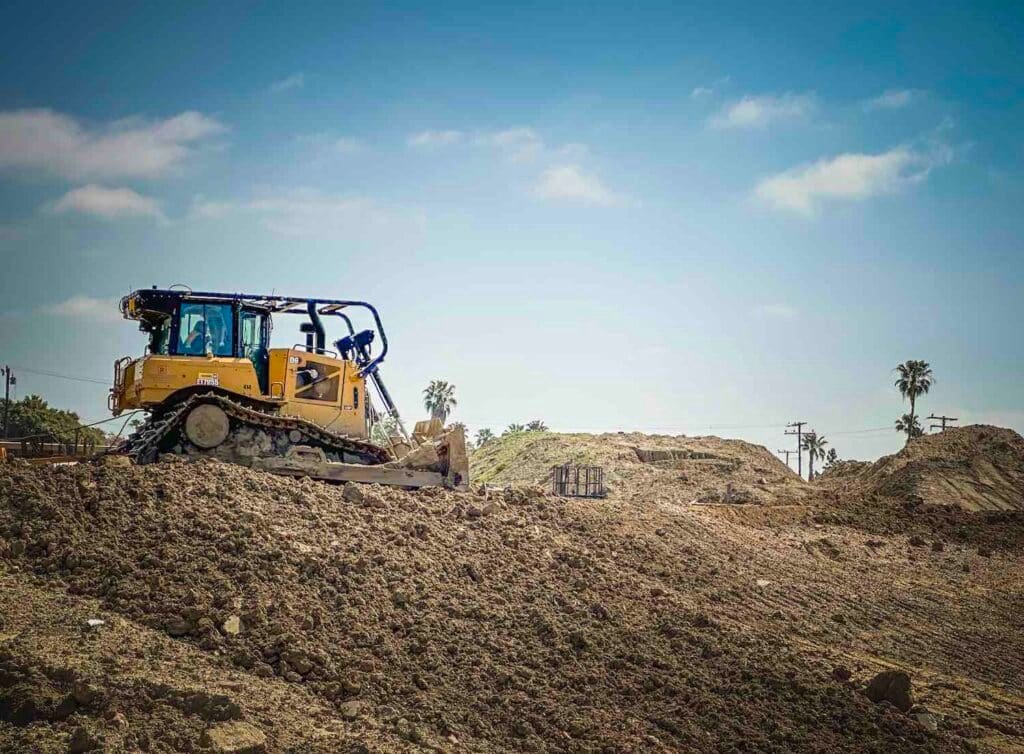
What exactly is happening at Colorado Lagoon and the northern tip of Marina Stadium?
The main point of the project is complicated in terms of construction but relatively simple in concept: returning the Colorado Lagoon back to its former glory by reconnecting it more fluidly to the Marine Stadium via a new tidal channel that will run through Marina Vista Park.
Excavation of Marina Vista Park for the new channel has begun, giving people a very rough preview of what the channel will look like upon completion, stretching from the south side of the Colorado Lagoon to the northern tip of Marina Stadium.
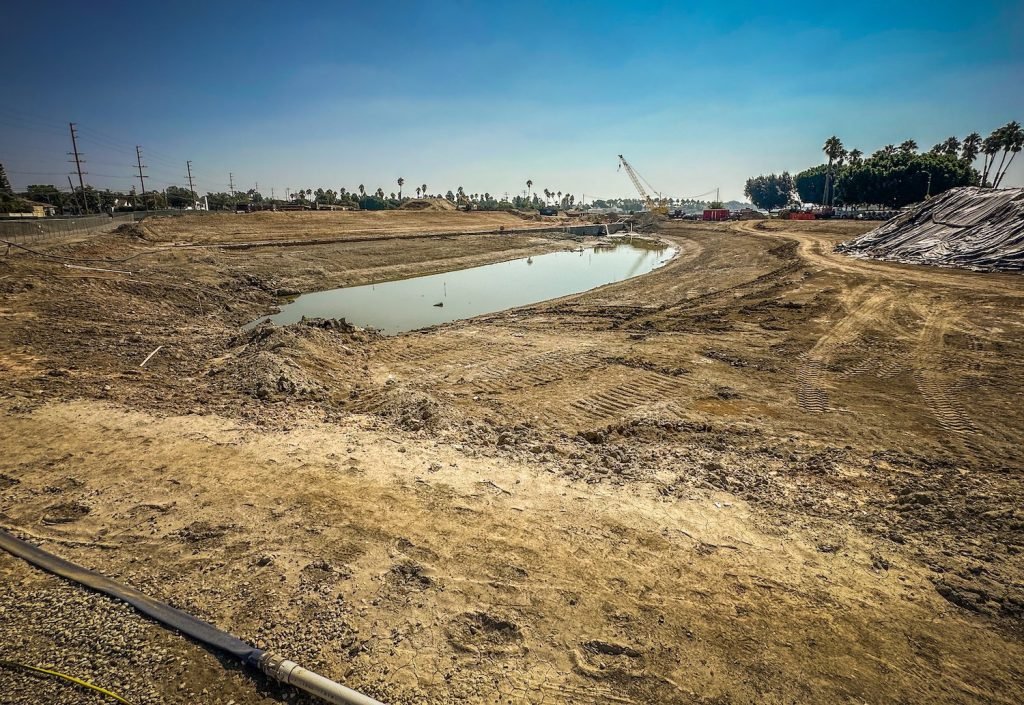
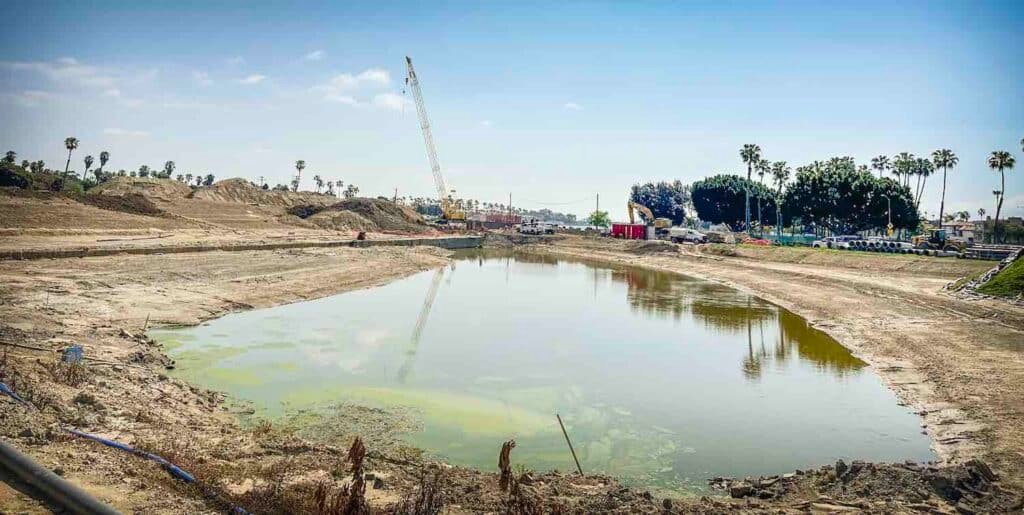
Above: The lagoon’s extension south of Colorado St in September of 2023 [right] versus March of 2024 [left]. Photos by Brian Addison.
And the slight vibrations felt by neighboring residents? That was the result of sheet piling installation at both the southern part of Colorado Lagoon and the northern tip of Marine Stadium where it meets Elliot Street. The sheet piles are being used to both blockade the water and allow the demolition of existing infrastructure to make way for new bridges: One that will run over the new tidal channel along Colorado Street on the north and another that will run over the channel where it meets Marine Stadium on Elliot Street.
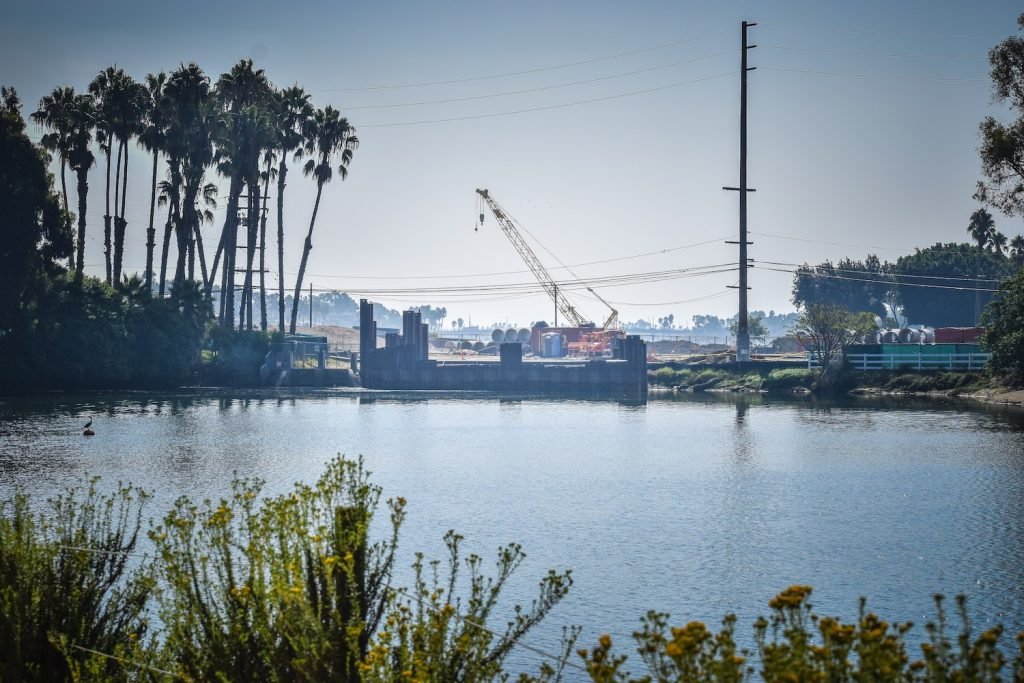
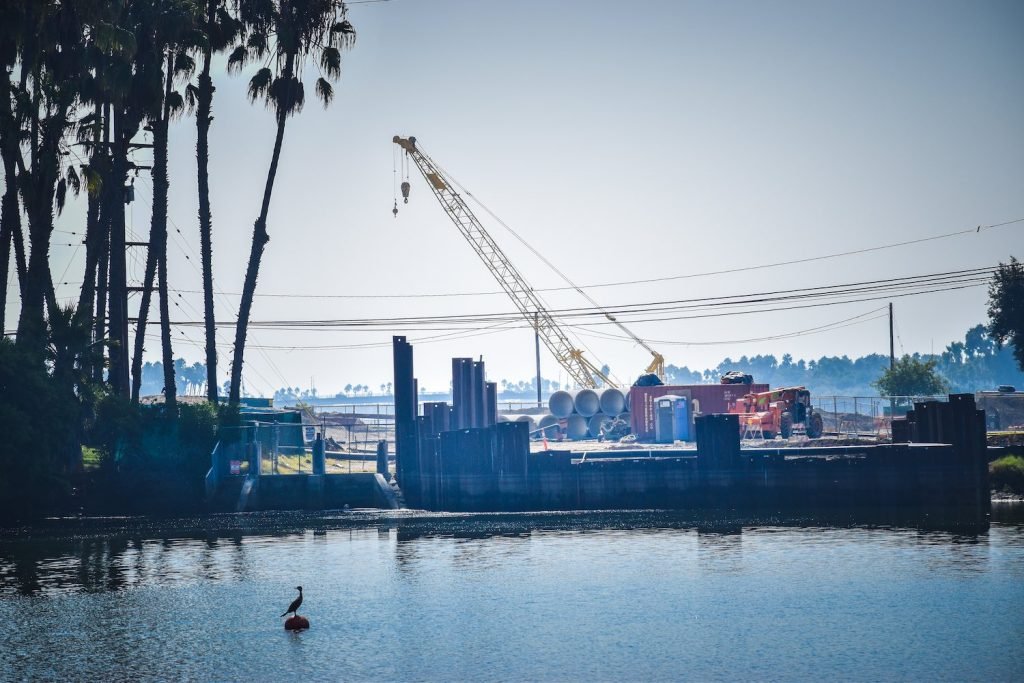
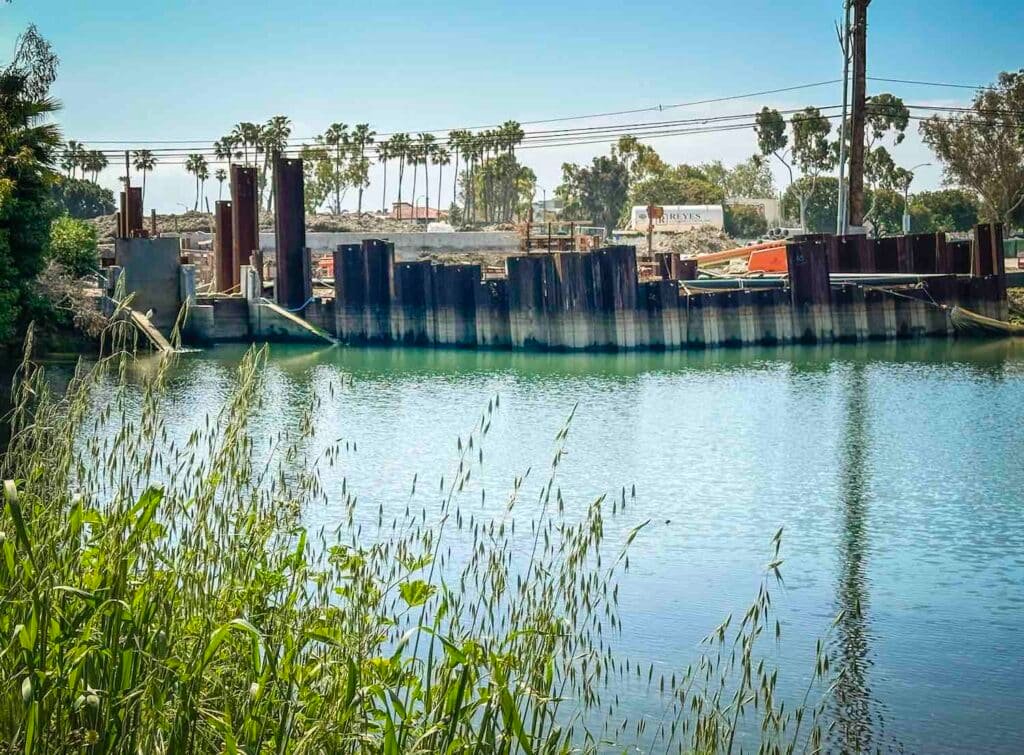
A temporary pedestrian path has been built that allows walkers, bicyclists, runners, and strollers to take a look at the construction as it moves forward; the path is accessible slightly west of Orlena Avenue on Colorado Street on the east and at the center of the western curve of Elliot Street on the west.
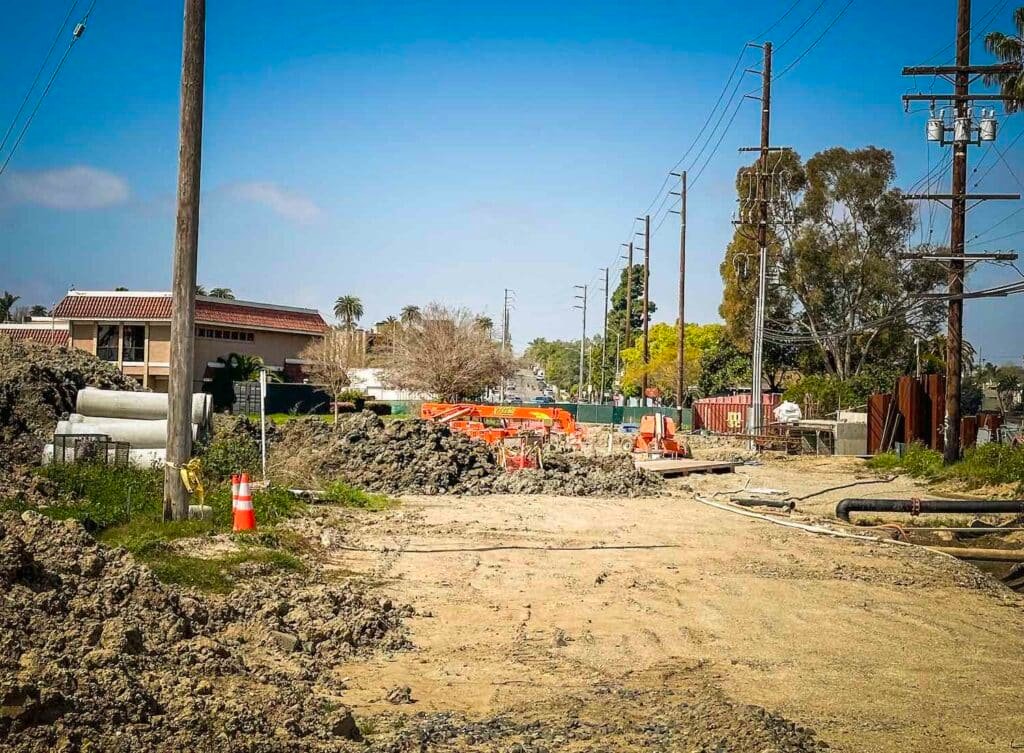
What will the Colorado Lagoon and Marina Park look like upon completion?
When first reporting on the project in 2021, the city was out to bid on a contractor before one was chosen in November of 2022, its cost increasing from $26.3M to $32.5M—and when complete, will return the water channels into something almost identical to what previously existed before overdevelopment of the space led to an eradication of its environment.



The tidal channel project is the last major phase of what has been a two-decade overhaul of the area: In 2001, the Friends of Colorado Lagoon coalesced to address the massive pollution within its water and decay surrounding the lagoon itself after multiple development projects, beginning in the 1960s, restricted its flow to Marine Stadium.
What’s the history behind Colorado Lagoon and the surrounding area?
What was once a beaming jewel of the city, the lagoon was and remains one of the few remaining coastal salt marshes on the West Coast—and with a rich history which includes being home to the 1928 U.S. Olympic diving trials as well as one of the most loved picnic spaces by locals, resident concerns were valid.

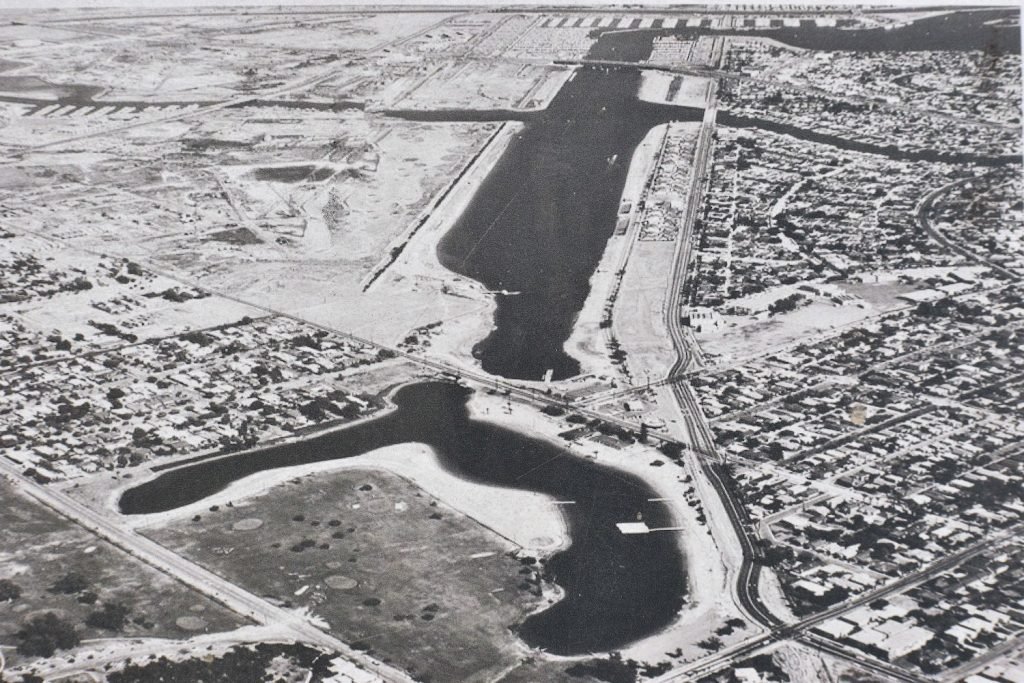
On the left: Colorado Lagoon as it was configured during the 1928 Olympic trials. On the right: The first of what will eventually be many constrictions on the Lagoon’s connection to Marine Stadium in the late 1960s.
Once part of the 2,400-acre Los Cerritos wetlands, it had once enjoyed open connection to the tidal flows in nearby Alamitos Bay. In the 1960s, with an increase in urbanization, an underground culvert was created but prevented full tide drainage and following the many storm drains which dump into the lagoon, led to its pollution.
By the late 1990s, the once-flourishing recreation destination and wildlife habitat was instead filled with what Heal the Bay continually dubbed a “Beach Bummer,” continually making lists of the state’s most polluted water bodies, with elevated levels of harmful chemicals and bacteria.
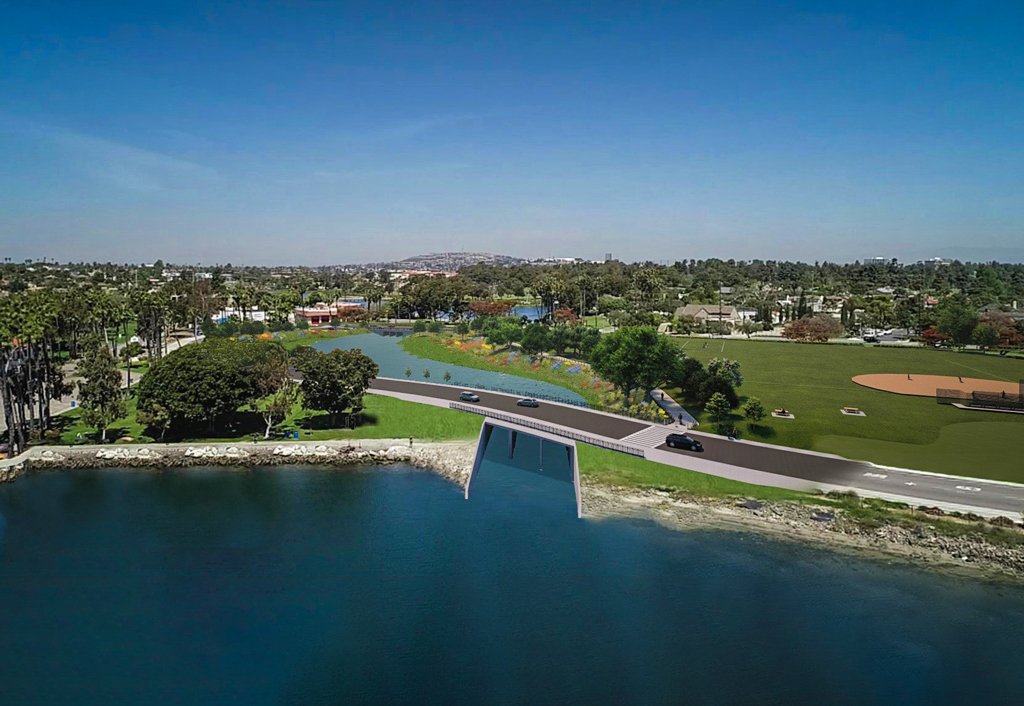
Once advocates were able to connect with the city following years of back-and-forth about how to go about restoring a lagoon, it took nearly three years to do a full evaluation.
And then it took another five years for the next phase that proved to be the real transformation: A four-year sediment removal that carefully required not killing or too harshly disrupting the existing ecosystem followed by a year-long process in restoring the shallow water habitat and shoreline that was altered by the sediment removal process.
This article was updated on Mar. 22, 2024. It was originally published on Sep. 23, 2023.



I live in the Alamitos Heights and I walk by and though the Colorado Lagoon daily and I see no work be done. After talking to a supervisor he stated that the hold up is in getting water permits approved, and the city holding up the permits and funding. Tell the city “lets get this done” There is an old saying “If Rome was built in a day I want that contractor”
Love the project, however the City did not plan on the traffic changes at all! Sixth street is the brunt as all the traffic from Colorado and Elliot near the project must now go to 7th and Park. This turns 6th an alternative to 7th. The City was eventually receptive to our organized efforts, but it took 9 months to only partially address the issues on 6th street in Alamitos Heights.
I thank the City, but we need to find a better planning process and a faster way to address issues that are caused by this project or other projects in the future.
You are entirely right; done and done.
Gosh, what a most pointless project that takes away from a useful green space. I get the environmental angle, but damn guys cmon.
You get the value of restoring the lagoon to its former natural working process, but don’t want to compromise things changing? Lol
How about fixing our terrible streets first. Nope, let’s spend $32m connecting marine stadium to the lagoon, and in the process making traffic terrible for two years.
I could not agree with you more. To prioritize this project over public safety is nothing short of idiocy.
It will NEVER work…. Just like the Naples Canals, no water ever exchanges….
[…] following article appeared first LongBeachize. It has been lightly edited for […]
Who do I contact with regards to the trucks going down Eliot Street starting at 5:30am Monday thru Friday. This is unacceptable.